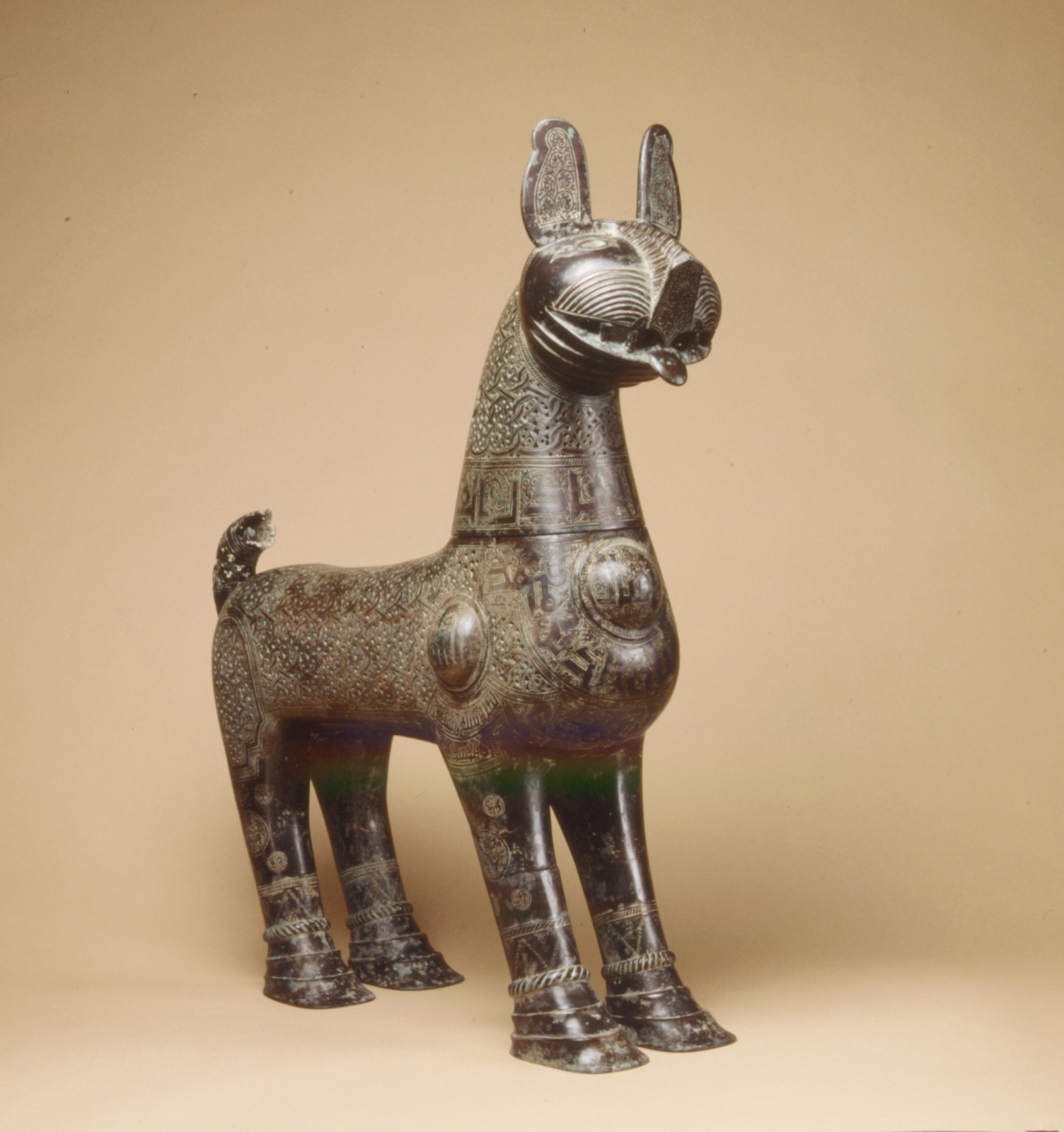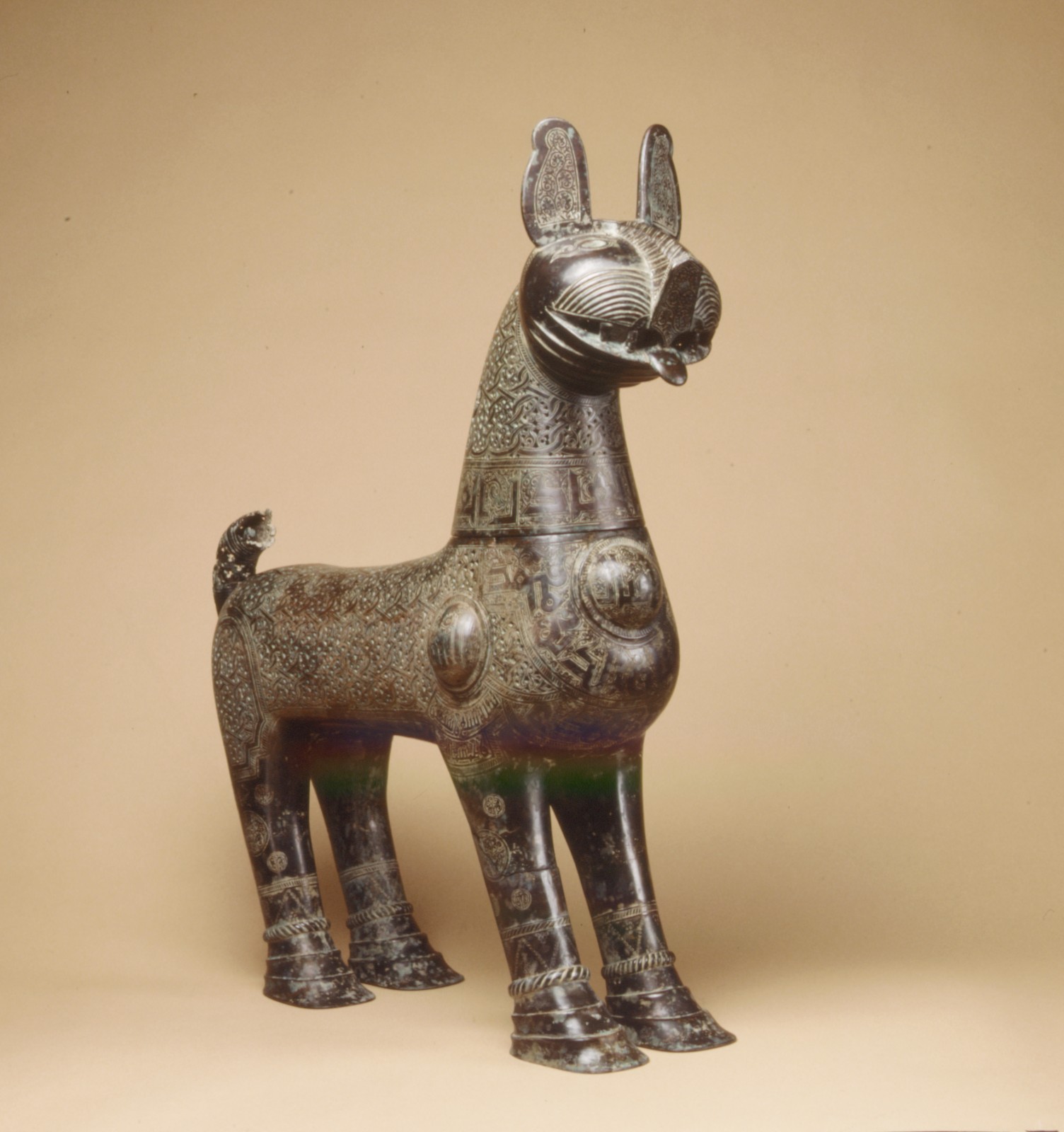This charming creature is a lion-shaped incense burner from 12th-century Iran. Burning incense went inside him, and the scented smoke came out all the little holes that decorate his body.
The lion was made for the Seljuq court of Amir Saif al-Dunya wa’l-Din ibn Muhammad al-Mawardi, an Islamic dynasty that ruled Iran in the 11th and 12th centuries. The Seljuq had many expert artists, and they particularly excelled in metalwork like this bronze piece. In fact, their artistic style continued long beyond their political influence, which was already dying by this time.
Arabic writing incorporated into the lion’s decoration conveys a lot of information, including the maker’s name. The Seljuq practiced Islam, a religion that forbids human and animal representations in art. The Seljuq, like many other Islamic traditions, however, held that the rule applied only to religious art. So they felt free to have animals like this one in their palaces for secular purposes.
The incense burner is rather large—perhaps the size of an average dog. It’s full of personality but it’s not a very ferocious-looking animal. He actually looks rather friendly, though probably less so with incense smoke coming out of his head. The lion incense burner stands out among the many spectacular works on display in the Metropolitan Museum of Art’s Islamic art galleries. It’s easy to imagine that he also drew lots of attention in the Iranian palace he originally called home.
- Alexandra Kiely
P.S. This lion indeed looks more like a friendly pup. : ) Check our selection of the cutest dogs in paintings here. <3


 Ja`far ibn Muhammad ibn `Ali
Ja`far ibn Muhammad ibn `Ali